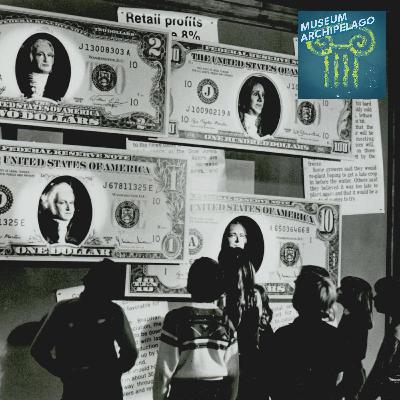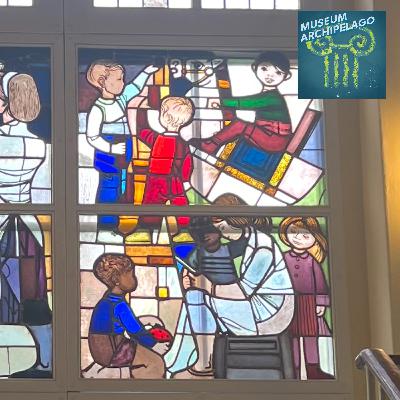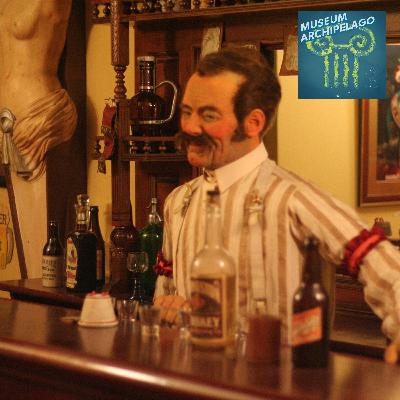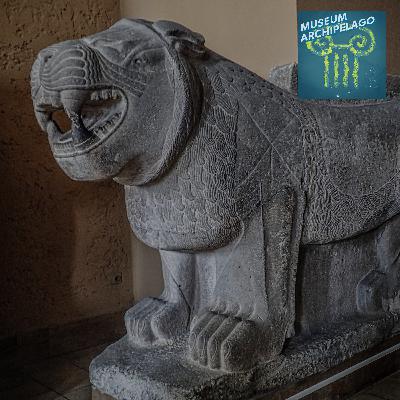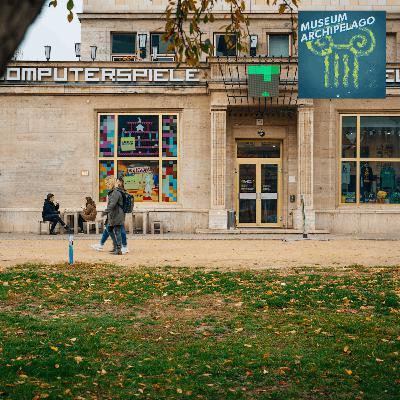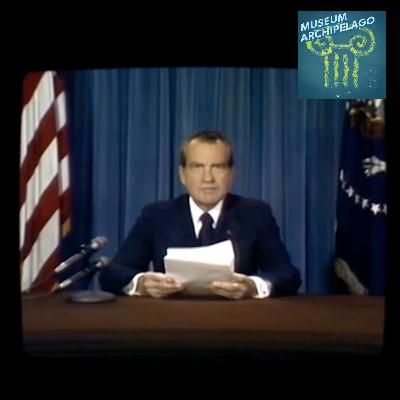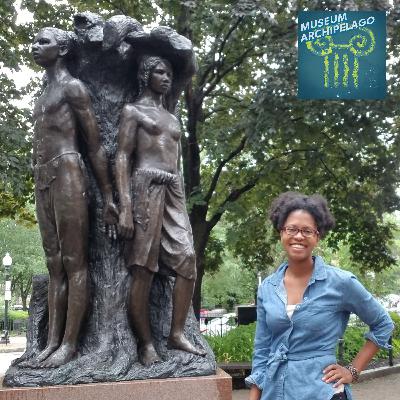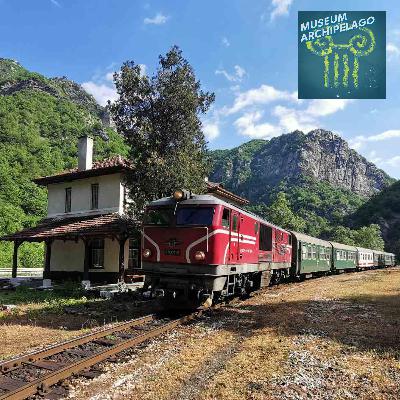110. Revisiting The ‘Enola Gay Fiasco’ Today
Description
For the 50th anniversary of the end of World War II, the Smithsonian National Air and Space Museum planned to display the Enola Gay, the Boeing B-29 that dropped the atomic bomb on Hiroshima. The plane was restored to be part of a full exhibit, presented alongside context about the atomic bombing's mass civilian casualties.
But that exhibit never opened. Instead, after years of script revisions and intense pressure from veterans' groups and Congress, the museum displayed the restored bomber's fuselage with minimal interpretation. The exhibit was primarily dedicated to the technical process of restoring the aircraft; as one visitor noted, "I learned a lot about how to polish aluminum, but I did not learn very much about the decision to drop the atomic bomb."
In this episode, historian Gregg Herken, who served as Chairman of the museum's Space History Division during the controversy, recounts how the exhibit went from reckoning with the bomb's full impact to re-enforcing a patriotic narrative. He recalls the specific moments that led up to one of the museum industry's cautionary tales, like when the director agreed to remove evocative artifacts like a schoolgirl's carbonized lunchbox from Hiroshima from the exhibition plans, and how the Air Force Association demanded the exhibit say the bombing saved 1 million American lives and other assertions that have been challenged by generations of historians.
Today, as a new presidential executive order dictates how the Smithsonian interprets American history, we realize the "Enola Gay Fiasco" isn't just a cautionary tale—it's the blueprint for a more aggressive campaign to justify anything.
Topics and Notes
- 00:00 Intro
- 00:15 The Enola Gay in the 1980s
- 01:07 Gregg Herken
- 02:21 Initial Planning
- 02:40 Martin Harwit
- 03:48 Herken's Visit to Hiroshima
- 04:39 'The Lunchbox'
- 05:32 Initial Exhibit Script
- 06:26 Opposition and Controversy
- 07:15 Revisions and Criticisms
- 10:49 Air Force Association's Demands
- 11:59 Exhibit Cancellation
- 13:37 "Pale Shadow"
- 14:10 Reflecting on History and Censorship
- 20:55 Outro | Join Club Archipelago 🏖
DIVE DEEPER WITH CLUB ARCHIPELAGO 🏖️
Start with a 7-day free trial. Cancel anytime.
Your Club Archipelago membership includes:
- 🎙️Access to a private podcast that guides you further behind the scenes of museums. Hear interviews, observations, and reviews that don't make it into the main show.
- 🎟️ Archipelago at the Movies, a bonus bad-movie podcast exclusively featuring movies and other pop culture that reflect the museum world back to us.
- ✨A warm feeling knowing you're helping make this show possible.
Transcript
Below is a transcript of Museum Archipelago episode 110. For more information on the people and ideas in the episode, refer to the links above.
<input id="collapsible" class="toggle" type="checkbox">
<label for="collapsible" class="lbl-toggle">View Transcript</label>
Welcome to Museum Archipelago. I'm Ian Elsner. Museum Archipelago guides you through the rocky landscape of museums. Each episode is rarely longer than 15 minutes. So let's get started.
By the late 1980s, the Enola Gay – the Boeing B-29 Superfortress that dropped the atomic bomb on Hiroshima – had been sitting disassembled at the Smithsonian's Paul E. Garber Preservation, Restoration, and Storage Facility in Suitland, Maryland for decades. What was once a beautiful shiny machine with four powerful engines, just powerful enough with the right banking maneuver to escape the hell it unleashed, was scattered and severed, with disheveled tubes where the wings used to be and the remains of birds nests in the turrets.
Gregg Herken: It was shortly after I joined the museum and I went out to the restoration facility that the Smithsonian operates in Garber in Maryland. And they wanted to show me around. And since I was the new chairman of the Department of Space History, they said I could get into the fuselage of the Enola Gay.
This is Gregg Herken, retired professor of American Diplomatic History at the University of California, and Chairman of the National Air and Space Museum's Space History Division from 1988 to 2003.
Gregg Herken: Hello. My name is Gregg Herken. I'm a retired professor of American Diplomatic History at the University of California.
Herken was part of the team planning the exhibition at the National Air and Space Museum that would feature the restored Enola Gay and of course he accepted the invitation and climbed up into the fuselage.
Gregg Herken: So I sat in Tibbets' seat, in the pilot seat for a second, and then I sat in the bombardier seat. And off to the left was a panel that had, I think it was five toggle switches. And one of them had the label "bombs." And actually on the day of the Hiroshima mission, it would've said in a little tag underneath that "special."
Gregg Herken: But I remember just thinking that I could sit in, I'm sitting in that seat, I could just reach over and flip that switch. And that was the switch that released the Little Boy bomb on Hiroshima. And I thought there is bad juju with that. I did not want to touch it.
At the other end of that switch was about 80,000 people, civilians of Heroshima.
Herken was chosen to be part of the exhibition team by the museum's new director, Martin Harwit.
Gregg Herken: I've written about and taught the subject of nuclear history, and that's why I think Martin chose me to begin at last the effort to get the Enola Gay on exhibit.
Director Martin Harwit, who was hired in 1987, was a bit of a departure from previous National Air and Space Museum directors who tended to be pilots or astronauts. Harwit was an astrophysicist. Gregg Herken thought that it was a signal that the Smithsonian was interested in not just displaying but also interpreting the artifacts that represent the nation's past.
The planned exhibition intended to showcase the restored plane along with multiple perspectives on the first atomic bombings in warfare – including their devastating human toll. Harwit still has his first written notes from when he first arrived at the museum and started thinking about, which show his brainstorm about the historical context of the bombing of Hiroshima in the escalation of bombing in World War II.
"This is not an exhibit about the rights and wrongs of war," Harwit wrote in 1987, "about who started what, and who were the bad guys and who the good. It is about the impact and effects of bombing on people and on the strategic outcome of conflicts. Is bombing strategically effective? Are the costs worth the strategic gains? How great is human error?"
As part of the early planning process, Gregg Herken visited the Hiroshima Museum in Japan in 1991.
Gregg Herken: Yes, Martin asked me to go to Hiroshima. The exhibit was just getting started and really in the planning stages. And we wanted to see if we could get artifacts from the Hiroshima Museum. So I was sent there and I met with the director. And I was frankly a little concerned about how I'd be received, that the idea of shipping artifacts about the atomic bombing to the Smithsonian for an exhibit they didn't really know about. I thought they might be hostile or at least suspicious, but he was very welcoming. He was actually a survivor of the atomic bombing.
The director offered to loan the Smithsonian any of the artifacts his museum had in its collection, for as long as the "Enola Gay" remained on display at the National Air and Space Museum.
Gregg Herken: I do remember walking around the museum and there was one artifact that really stood out to me and we wanted to include it in the exhibit and we nicknamed it "the lunchbox" and it was just a ceramic tube that had contained rice and peas and it had been taken by a young girl to school as her lunch. And she obviously did not survive the bombing and the tube - you could see that the rice and the peas in it had been carbonized by the heat of the bomb.
Gregg Herken: So we were never going to show any terrible pictures of burned bodies. We didn't need to. That's all any adult had to do was to look at this lunchbox, at the carbonized food in the little ceramic tube to realize what had happened to that little girl and what it must have been like to have been on the ground at Hiroshima at that time.
Back in the United States the exhibition team continued developing their plans and by early 1994, the


